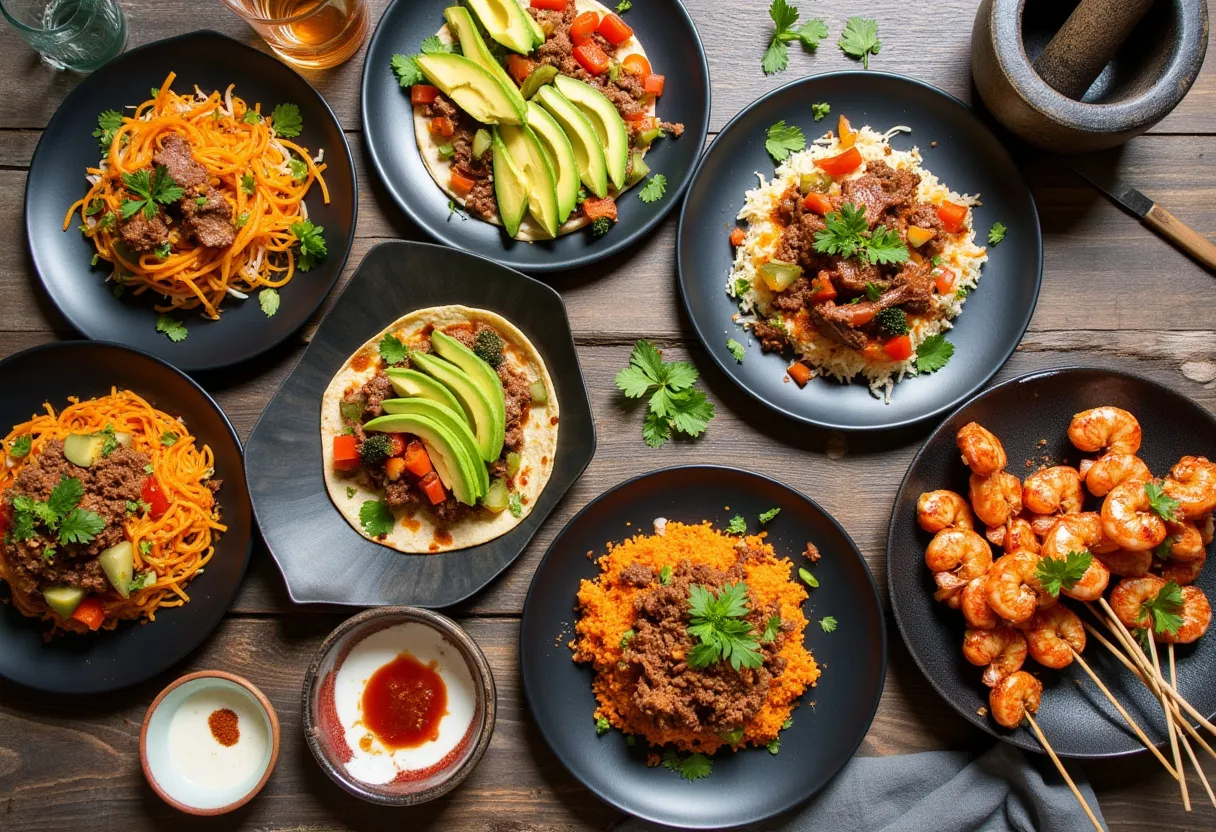
Spice It Up: David Kim's Essential Ingredients for Korean-Australian Fusion Cooking
Published on 9/21/2024
David Kim • 9/21/2024
Introducing Korean-Australian Fusion
If you're a food enthusiast exploring the dynamic world of fusion cuisine, look no further than the innovative, delectable blend of Korean-Australian flavors. As a Chef and Family Recipe Developer, I'm thrilled to share my passion for creating culinary magic by combining the best of these two diverse cuisines. Born from my roots in Seoul and nurtured through my experiences in Sydney, this unique style celebrates bold, spicy flavors with an infusion of fresh, local ingredients.
The Bold Flavors of Korean Cooking
Korean cooking is renowned for its robust and spicy flavors. The heart and soul of this cuisine lie in its fundamental ingredients, each contributing a layer of flavor that transforms any dish into a gastronomic delight. When I create my fusion recipes, these Korean staples play a pivotal role:
- Gochujang: This iconic Korean fermented red chili paste is a versatile condiment that adds a sweet, spicy, and savory kick to a myriad of dishes. Its deep flavor is indispensable in creating the signature heat that Korean cuisine is known for.
- Sesame Oil: The aroma of roasted sesame oil is a staple in Korean kitchens. It lends a nutty, aromatic essence that elevates the complexity of any recipe.
- Kimchi: A fermented vegetable dish usually made with napa cabbage and radishes, kimchi not only packs a pungent punch but infuses dishes with probiotics and health benefits.
- Soy Sauce: Used universally in Korean cooking, its umami richness is fundamental to achieving depth in savory dishes.
Australian Ingredients: Fresh, Vibrant, and Flavorful
Australia’s breath-taking landscapes provide a bounty of fresh, vibrant ingredients that shape its modern cuisine. When combined with Korean staples, these ingredients create a harmonious blend that invigorates the palate:
- Avocado: Known for its creamy texture and subtle flavor, avocado is perfect for balancing spicy Korean dishes.
- Lemon Myrtle: This native Australian herb contributes a lemony aroma with hints of eucalyptus, bringing a refreshing twist to savory dishes.
- Beef: Australian beef, known for its high quality and richness, pairs beautifully with Korean marinades.
- Prawns: Fresh Australian prawns are succulent and juicy, adding a delightful texture and flavor to any dish.
My Kitchen Tools: Essentials for Fusion Cooking
Crafting these mouth-watering meals requires not only quality ingredients but also reliable kitchen tools. Here are some essentials I rely on in my culinary adventures:
- Mortar and Pestle: Perfect for blending spices and herbs, creating fresh pastes that invigorate any fusion dish.
- Mandoline: Ideal for achieving precise, even slices of vegetables, essential for quick and uniform cooking.
- Grill: Whether it's a Korean BBQ or an Aussie barbie, grilling imparts a smoky, charred flavor that enhances the taste of meat and vegetables.
Cooking Tips for Achieving Balance
A successful Korean-Australian fusion dish requires harmony between flavors and textures. Here are some of my top tips to achieve balance:
- Use cooking timers to ensure each ingredient is cooked to perfection, retaining its unique flavor and texture.
- Combine spicy and savory flavors with creamy or mild ingredients for a balanced palate experience.
- Pay attention to texture contrasts – pair crunchy elements with soft, tender flavors.
- Allow fresh herbs and garnishes to complement both the visual appeal and taste complexity of your dishes.
Conclusion
Embarking on a culinary journey that melds the traditional flavors of Korea with the fresh, vibrant elements of Australia is a joyous adventure. With the right ingredients, tools, and tips, you can bring the best of both worlds to your table. Whether you're creating weeknight family meals or hosting memorable gatherings, Korean-Australian fusion dishes are sure to impress and delight. Happy cooking!
David Kim
Chef and Family Recipe Developer | I've been cooking
David was born in Seoul, South Korea, but moved to Sydney, Australia, with his family when he was a teenager. His parents opened a small Korean BBQ restaurant, where David developed a love for the fusion of Korean and Australian cuisines. Over the years, David has mastered the art of blending the bold, spicy flavors of Korean cooking with the fresh, vibrant ingredients of Australia. Now married with three children, David focuses on creating family-friendly, fusion recipes that are quick, easy, and delicious. He also hosts cooking workshops in Sydney to teach Korean-Australian fusion cooking.